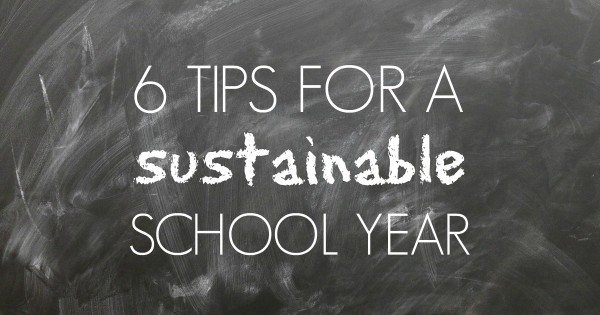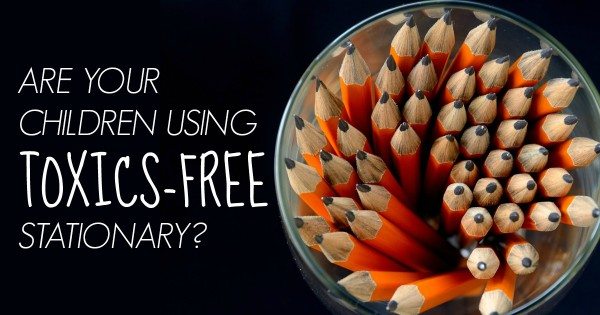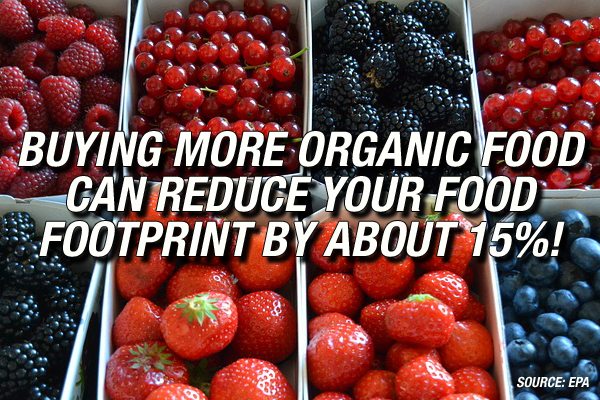
School’s back in! Whether you’ve already got everything you need for the school year or not – here are six tips to help you think about the planet and your child’s education.
The start of school is an fun time for some children, and a nightmare for others. For parents dealing with school supply lists, deteriorating technology and children growing out of uniforms – the beginning of the year can quickly become very expensive. What’s worse – many school supplies can also come at great expense to the planet and your children’s health.
Luckily, our purchasing power is a great opportunity for us to honour the planet while thinking about what’s best for our children. Here are six great tips to help guide you to a sustainable school year!
1. Look at what you have left over from last year
Buying a new set of school supplies every year might be exciting for your kids, but new things are often an unnecessary luxury. Take a look at what’s already in your house and your shopping list may quickly grow shorter! Repairs, repurposing, and upgrades will usually come at a lesser cost to you and the Earth, especially when it comes to resource-intensive products like electronics.
Sound boring? Don’t worry! You can still send your kids off to school ready for a brand new year by upcycling old products. For example, if old notebooks aren’t used up – try recycling last year’s pages and adding a new cover for the new school year! Here are some other great upclycing DIYs:
- Try these upcycling projects from the Premeditated Leftovers blog
- ReUseIt also have some fun DIY ideas for school supplies
- And you can definitely find a way to make new your old supplies on Pinterest!
If last year’s supplies are broken or unwanted, think about recycling or donating them to a school near you. The Recyclebank website has some great tips for how to reuse, restore or recycle old school supplies here.
2. Look for toxics-free technology
Today, more and more people around the world rely on laptops, phones and tablets as an essential part of their everyday lives. Technological tools are an increasingly dominant portion of kids’ mandatory school needs. As vital as they are to our kids’ education, we want to purchase them with mindfulness of their potential health risks to youth and the planet. However, the rate at which we purchase and discard these devices is having a serious impact on our planet.
Technological tools can be made with some of the most caustic toxins in the world, with devastating consequences for human and planetary health from manufacturing to disposal so it’s important to be aware of what’s in their devices and that we buy them only when it’s really necessary.
There is an increasing demand for greener, longer-lasting electronic devices, and theindustry has shown progress is possible. Greenpeace’s Guide to Greener Electronics provides a ranking system for the world’s largest electronics companies in terms of their efforts to combat climate change, eliminate hazardous substances from their products, recycle responsibly, and use sustainable materials in their products and packaging. Learn more about green gadgets here.
3. And avoid toxics in stationery supplies
For everything else on your child’s school shopping list – from art supplies and paper products like notebooks and folders, to pencil cases, pens, and backpacks – it’s best to try and avoid toxics.
Plastics and synthetic materials can turn up in nearly all of these supplies and are nearly impossible to avoid completely, but there’s a lot that you can do to avoid the worst of the worst. For example, plastics containing polyvinyl chlorides (PVCs) can be particularly harmful to children, who are extra-sensitive to toxins during their development. Green America offers great some tips for avoiding PVCs in school supplies here.
- Paper products should be minimally impacting to the environment. We’re talking smart production practises to include low to zero deforestation along the supply chain. Here’s a Greenpeace overview on how to find the most earth friendly papers for your students.Spoiler alert: Buy recycled papers that are produced without chlorine bleaches.
- Art supplies: These too can have toxic components. Check out Green America’s article on how to make sure your child isn’t exposed to toxics during creative play time.
4. Try to pick local and organic produce for school lunches
Australian schoolchildren often fare a lot better than kids from other countries when it comes to canteen food – but if you have time, packing your child’s lunch can be a great way to make sure their food is good for them and the environment.
There are a lot of ways we can adjust our diets to do better by our planet. Luckily, eating local produce can be a great way to cut down on unsustainable production, extreme travel distances and excess packaging.
Farmers markets are one of the best places to get your hands on locally produced fruit and veggies. If you’re in Australia, you can find your closest farmers market using this directory from the Australian Farmers’ Markets Association.
And remember – whether you’re eating food from a supermarket, a farmers market or from your own veggie patch – take what you need and try to reduce food waste. For more ways to bite away at your food footprint, check out this blog on change your food habits.
5. If you’re including seafood, make it sustainable!
Our oceans are in crisis. We need to make concrete steps to dramatically improve global fishing practises and combat air pollution and ocean acidity. So if a tuna sandwich or fish fingers is in your lunch plans for the school day, check out these tips for sustainable seafood eating:
- Whenever you buy seafood, find out if it was caught using sustainable fishing methods. You should be able to know what you’re eating, where it came from and how it was caught or farmed.
- Check out our Canned Tuna Guide and the Sustainable Seafood App from our friends at the Australian Marine Conservation Society
- For other ideas from around the world, take a look at the Greenpeace recipe book: Fishers’ Favourites, The Best Seafood Recipes by Low-Impact Fishers Around the World.
Bonus tip: You can also be sustainable in the way you pack lunch, by looking for BPA, PVC, and lead-free lunch containers in a variety of sizes that can replace the need for plastic bags each day. Switch-out disposable juice boxes or water bottles for toxin-free thermoses or camelbacks and your child will be eating in green style. Even lunch boxes and reusable ice packs can be made out of recycled or sustainable materials.
6. Find second-hand clothing
Schoolchildren are growing all the time, and buying a new set of school uniforms yearly can be an expensive and resource-intensive process. A great way to offset all of the environmental impacts caused by producing new clothes is to simply find second-hand items whenever possible. A lot of schools have second-hand clothing stores where you can buy preloved uniforms for a few dollars.
And when it comes to last year’s wardrobe that’s damaged or too small this school year, check out these tips for how to repurpose them! Finally, here’s how to recycle clothes that just can’t be salvaged.
When it comes to back to school shopping, to save money and the Earth’s resources, it’s all about buying with purpose. School supplies and clothes are meant to be tools that enable our learning. What tips do you have for saving money and the planet during the school year? Share your ideas below!
Based on this awesome blog by Christina Dawn Morgan at Greenpeace US.




